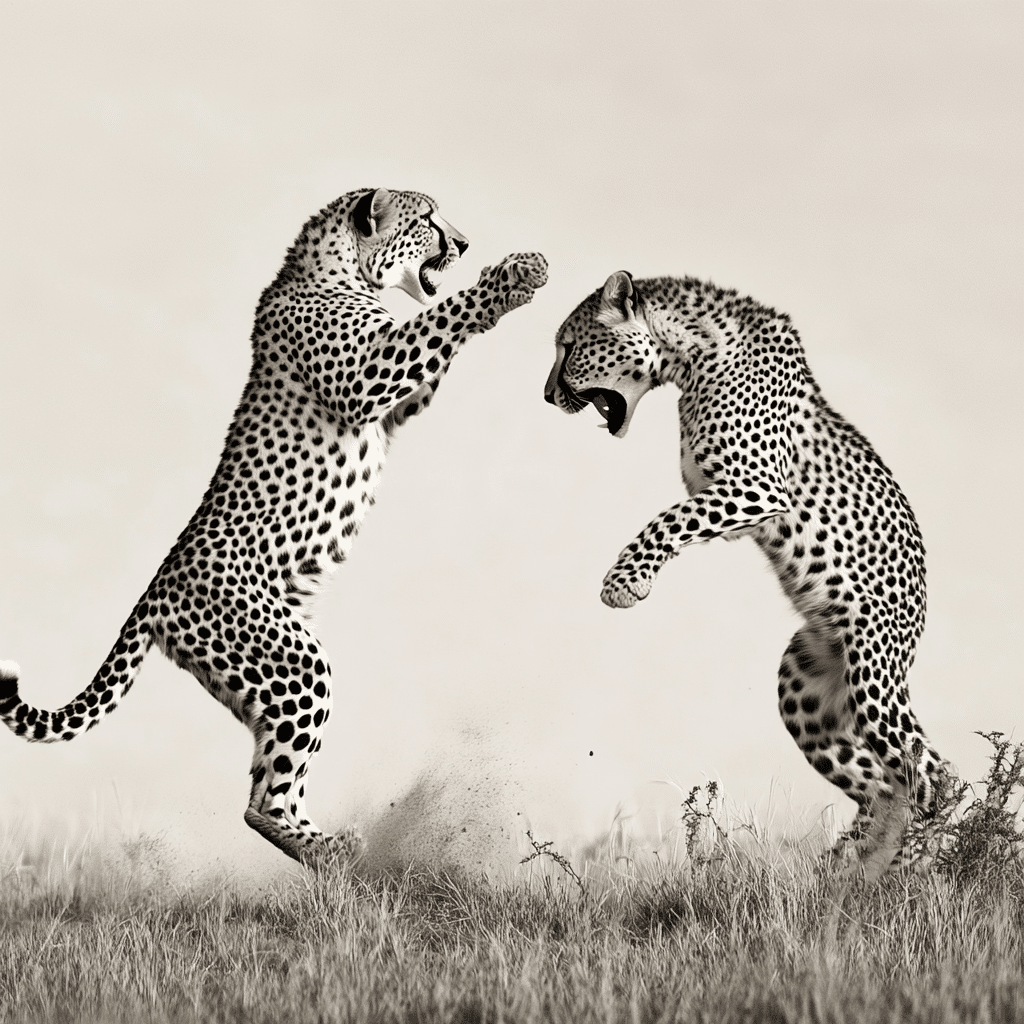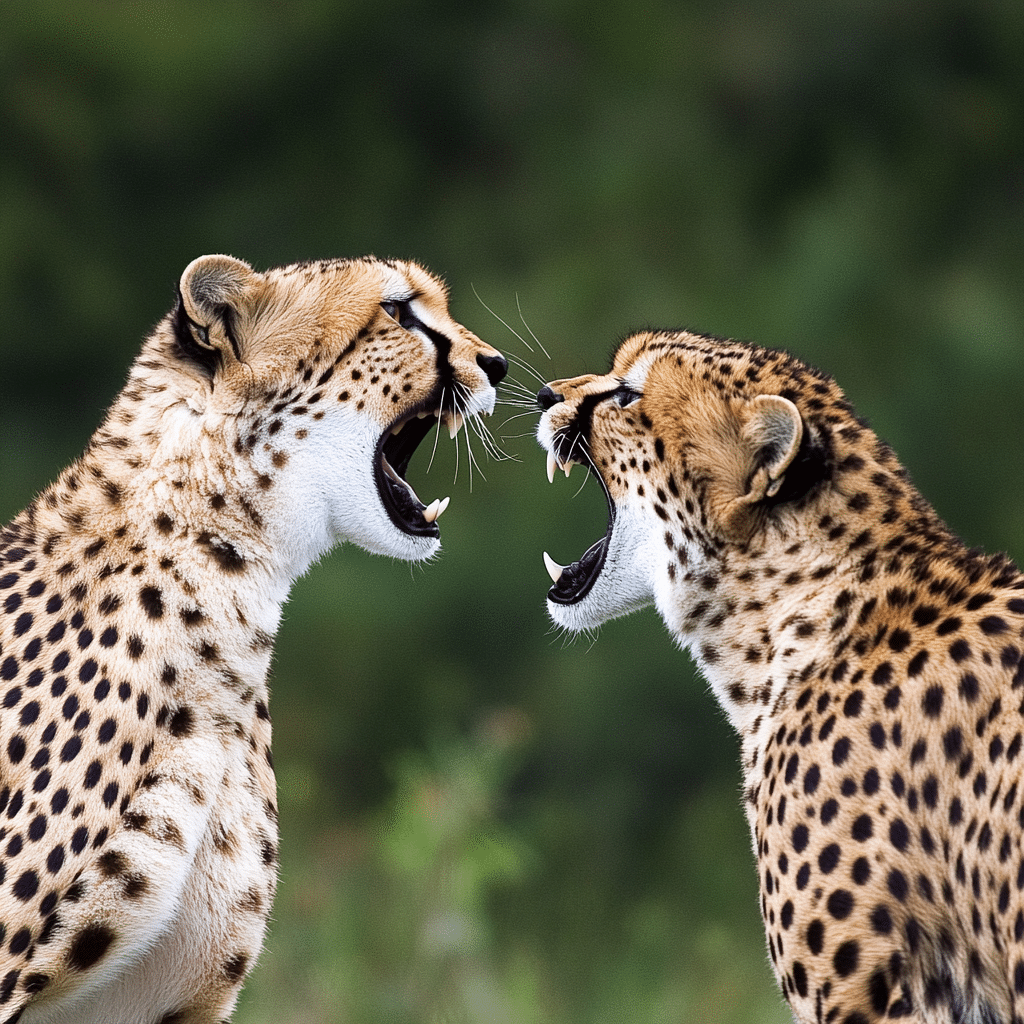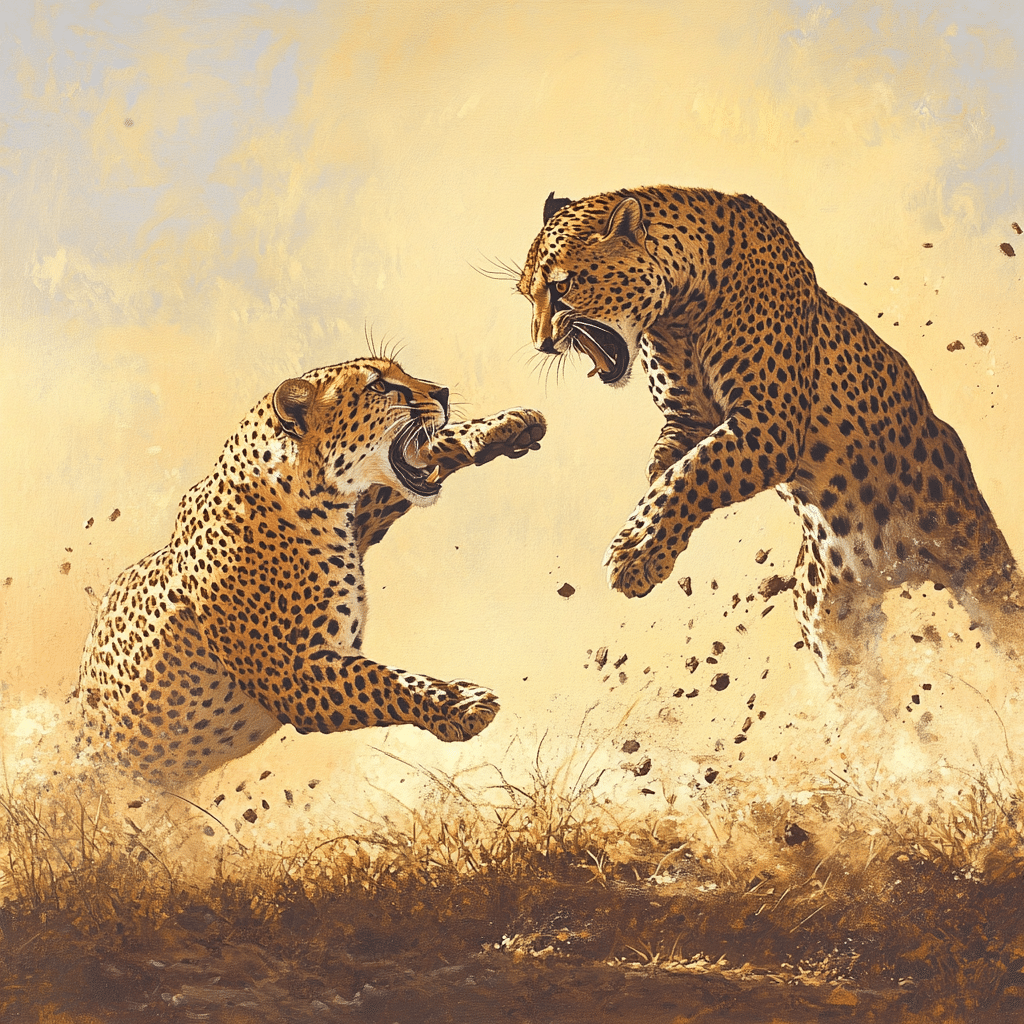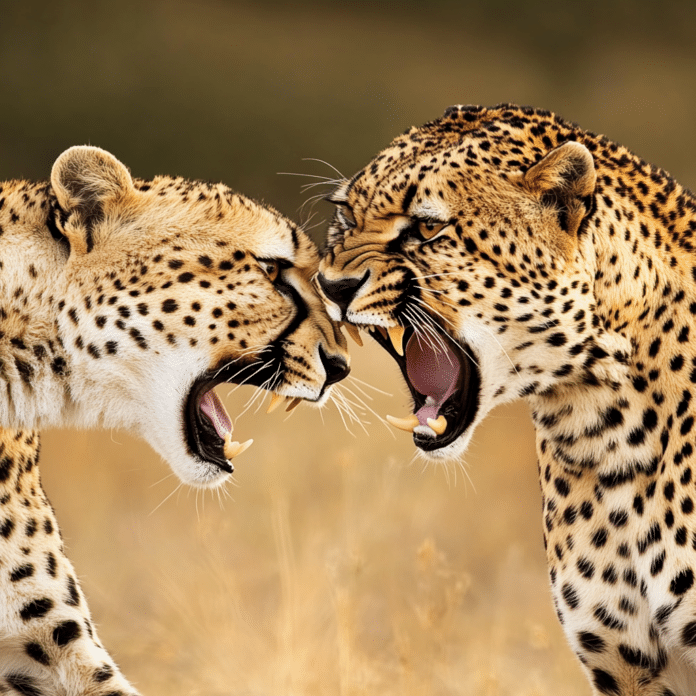When we think about the majestic big cats that roam our planet, the cheetah vs leopard rivalry regularly comes to mind. Each feline, with its impressive attributes, commands attention and draws admiration from nature lovers worldwide. Despite their similarities in grace and hunting prowess, they differ significantly in appearance, behavior, and lifestyle. This article delves into these remarkable cats, exploring their physical traits, hunting tactics, habitats, and conservation status to answer the intriguing question: which one truly wears the crown as the ultimate big cat?

7 Key Differences in the Cheetah vs Leopard Showdown
1. Physical Appearance and Adaptations
Perhaps the most apparent cheetah vs leopard distinction lies in physical appearance. Cheetahs boast slender, elongated bodies that allow them to slice through the air like a hot knife through butter. Their striking black “tear mark” patterns, accentuated by a light tan coat dotted with black spots, provide effective camouflage in expansive grasslands.
Leopards, on the flip side, showcase a stockier physique, with broad skulls and impressive muscle mass. Their golden-yellow coats, adorned with black rosettes, help them blend seamlessly into forests and rocky terrains. These adaptations lend themselves perfectly to their hunting environments, enabling both species to capture their prey effectively.
2. Speed vs Stealth: Hunting Techniques
Now onto how these two cats pursue their meals—this is where the cheetah vs leopard debate becomes especially fascinating. Cheetahs are widely recognized as the fastest land animals, breaking records with lightning-fast bursts that can reach up to 75 miles per hour! This speed plays a crucial role during the hunt, as cheetahs rely on quick sprints and the element of surprise to overtake agile prey, often targeting species like gazelles.
In contrast, leopards are stealthy hunters who master the art of patience. Using their superb camouflage, they sneak up on unsuspecting animals, preferring to pounce when the moment feels just right. Their climbing abilities allow them to stash their kills high in trees, keeping meals safe from other predators like hyenas. While cheetahs are the swift sprinters, leopards emerge as tactical thinkers, enabling them to thrive in various habitats.
3. Habitat Preferences: Diverse Environments
When it comes to the geographical aspect of the cheetah vs leopard debate, there’s a world of difference. Cheetahs favor open grasslands and savannas, where their speed can shine. They are primarily found in sub-Saharan Africa and select areas of Iran, typically preferring spaces that allow for expansive chases.
Leopards, however, showcase exceptional versatility. They thrive in diverse environments, including dense forests, mountainous terrain, and arid landscapes. Found across Africa and extending into parts of Asia, including the Indian subcontinent, leopards adapt well to varying ecosystems, which has contributed significantly to their population stability over time.
4. Social Behavior: Solitary vs Social Structures
Another act in the cheetah vs leopard saga pits their social structures against one another. Cheetahs often display a unique social behavior, particularly among males. They form small groups called “coalitions,” usually made up of brothers. This camaraderie helps them in hunting and defending their territory, showcasing a cooperative side to their existence.
Leopards, however, are notoriously solitary creatures. These felines prefer to carve out their domains independently, relying on scent markings and vocalizations to communicate their territorial boundaries. Female leopards exhibit diligent maternal instincts, raising their cubs alone while bestowing essential survival skills upon them for approximately two years.
5. Vocalizations: Communication Styles
Communication in the cheetah vs leopard world reveals intriguing differences. Cheetahs have a distinct vocal repertoire, utilizing soft “chirps” for interaction among young ones and during group activities. Their sound library includes short hisses and growls, but they lack the deep roar commonly found in larger cats.
Leopards boast a broader range of vocalizations, including resonant roars that can echo for miles. These roars signify territorial claims and serve vital roles during mating seasons. Their vocalizations reflect a solitary lifestyle, ensuring they can establish dominance in their specific habitats without requiring the bustling social structures seen in cheetah coalitions.
6. Conservation Status: Threats and Protection
The current conservation status of these two big cats tells a compelling story. Cheetah populations face significant challenges stemming from habitat loss, human-wildlife conflicts, and dwindling prey availability. Classified as vulnerable by the International Union for Conservation of Nature (IUCN), many initiatives aim to preserve their habitats and reduce human pressures.
Leopards experience a different kind of threat intelligence. Generally classified as near threatened, their population remains more stable in specific regions. Conservation programs focusing on anti-poaching methods and habitat protection have maintained their numbers. Interestingly, leopards have demonstrated a surprising ability to adapt to human-dominated landscapes, a quality that has helped them thrive east of the Cheetah vs Leopard rivalry.
7. Cultural Significance: Symbols in Society
Both cheetahs and leopards transcend mere animals; they serve as significant cultural symbols across various societies. Cheetahs often embody speed and grace in literature and modern media, appearing as icons of agility in various contexts, from fashion to sports branding. Their lithe movement has made them symbols of elegance in countless cultural mediums.
Conversely, leopards are synonymous with stealth, power, and cunning. They often appear in artistic motifs, mythology, and heraldry, celebrated for their mysterious nature. Revered throughout history, leopards are often tied to notions of royalty and cunning in different cultures, manifesting their prowess in the realm of symbolism alongside the cheetah vs leopard narrative.

The Final Word on the Cheetah vs Leopard Debate
As we wrap up this exploration of the cheetah vs leopard contest, it’s evident that both cats hold unique and extraordinary traits tailored to their environments. While the cheetah’s unmatched speed is certainly impressive, the leopard’s strength, adaptability, and survival skills carve out a formidable presence in the animal kingdom.
In the end, declaring a singular “ultimate big cat” largely depends on the criteria set: speed, adaptability, hunting tactics, or even cultural resonance. Both species play indispensable roles in their ecosystems, each representing the wondrous diversity of the feline family. Recognizing their distinctive qualities not only enriches our understanding of them but also emphasizes the importance of protecting their habitats for future generations.
Whether you’re fascinated by the thrill of a cheetah sprinting at full speed or captivated by a leopard gracefully padding through the trees, both are astounding examples of nature’s splendor. Nature enthusiasts, advocates, and casual readers alike should take to heart the beauty these big cats offer.
Cheetah vs Leopard: Fun Trivia and Interesting Facts
Wild Card Facts
When you dive deep into the fascinating world of big cats, the cheetah and leopard truly stand out for their striking differences. Did you know that cheetahs are the fastest land animals, capable of reaching speeds up to 75 miles per hour? That’s about as fast as a sports car racing down the highway! While they’re built for speed, leopards favor stealth and strength, often pouncing on prey from tree branches—a skill that pairs well with their beautiful spotted coat, which helps them blend into the shadows. Speaking of blending in, if you’re curious about unique adaptations, take a moment to explore thigh Tattoos For Women and see how creativity could symbolize personal attributes, much like how these big cats reflect their environments.
Tracking Their Habitats
Both cheetahs and leopards roam diverse landscapes, but their homes differ significantly. Cheetahs prefer open savannas where they can spot prey from afar, while leopards thrive in forested areas, where they can climb trees and stay hidden. Interestingly, despite them being wild animals, cheetahs exhibit a unique form of sociability, often seen in small groups or family units. On the other hand, leopards are more solitary. This trait can be quite advantageous, much like finding best Loans For terrible credit when financial needs arise. Adapting to their surroundings is key for survival, whether in the wild or facing everyday challenges!
A Closer Look at Their Skills
Cheetahs rely on acute eyesight and swift acceleration during the chase. Once they lock onto their target, it’s a relentless sprint. In contrast, leopards showcase ambush tactics, using their power and patience to surprise unsuspecting prey. This difference is like comparing boxing to wrestling; each has its own set of skills and techniques. It reminds us of thrilling rivalries, much like the upcoming showdown between Mike Perry And Jake paul. Understanding these attributes deepens our appreciation for wildlife and how these magnificent creatures function in their ecosystems.
Whether you’re cheering for the speedy cheetah or the cunning leopard, both are spectacular in their own right. Just as we take care of our own well-being—consider the importance of eye health northwest—it’s( vital to respect and protect these incredible animals. Their every move offers insights into survival, resilience, and the beauty of nature’s design, reminding us that the circle of life continues, even in the shadows of the trees or the bright savanna.




